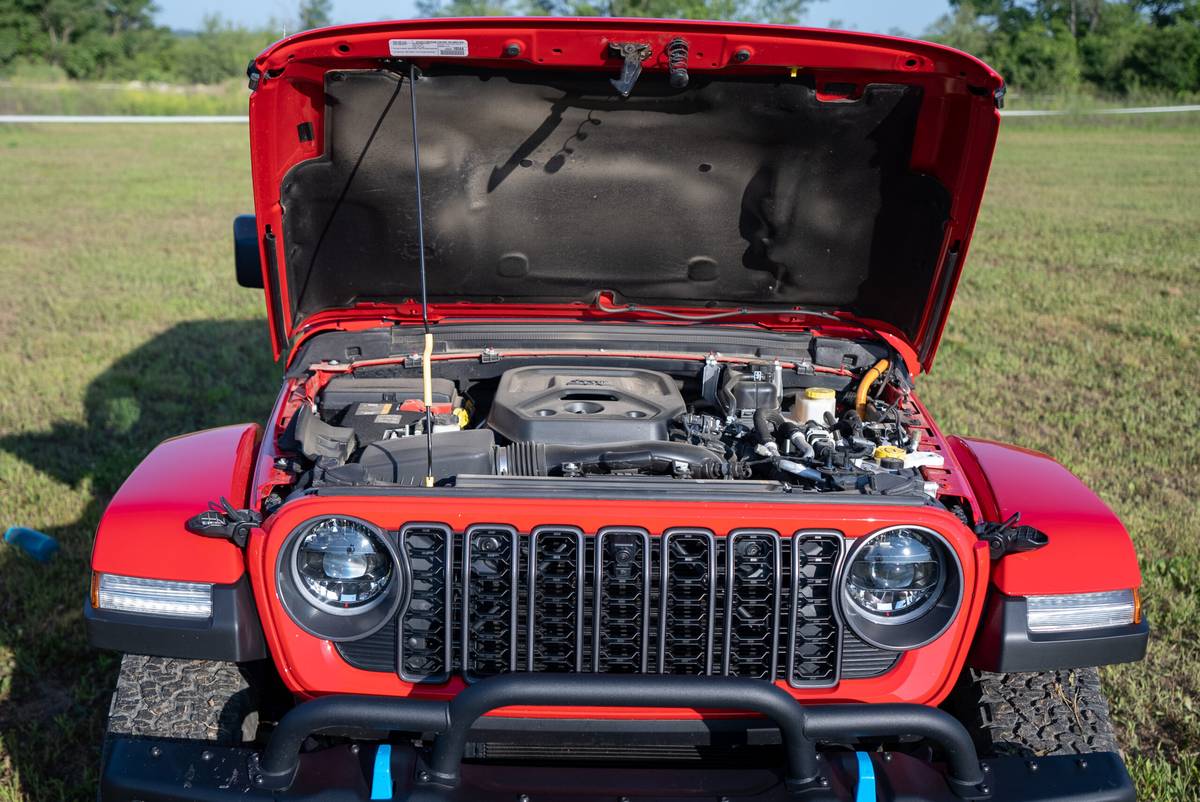The Morning Call and Mcall.com's view
Everyone knows that a sports car is long, low and mean looking. So, what’s this innocuous-looking, rolling box known as the Volkswagen GTI trying to pull off? Just because it eats up tortuous back roads like sodium chloride eating up an unsuspecting fender; and just because its low displacement, high-revving engine hangs on the torque curve from first to fifth, is no reason for it to act so smug.
And to add even further insult to already grievous injury, it gets good fuel mileage, has plenty of passenger room and has a storage compartment big enough to qualify as a nuclear waste site. But pretty it ain’t. Even with kindness and charity in your heart, you can’t say the GTI is exciting looking. In fact, you have to go a long way to say it’s not homely. But beauty – or more accurately, lack of beauty – is only sheet metal skin deep.
The test car – supplied by Lehigh Valley Volkswagen, 1346 Lehigh St., Allentown – was a likable, cheerful-looking car done up in Mars Red. Its handling and performance did not exactly come as a surprise since that’s what this little German-designed hotshoe was designed to do.
Although the VW GTI model was only introduced last model year, this year’s model is already a second generation car. No, this is not the riddle of the day but rather a roundabout way to say that the basic Volkswagen model had its long overdue change for the 1985 model year. Last year, the GTI was based on the Rabbit, this year it is a souped-up, modified Golf. As such, it is only a slightly larger car – but the size hike was large enough to take it out of the subcompact class and make it a compact.
As for basics, the GTI (and Golf) has a wheelbase of 97.3 inches; overall length, 158 inches; width, 66.1 inches; height, 55.7 inches, and curb weight, 2,150 pounds. These dimensions can be somewhat deceptive. First, you will notice that it is a very short car. But the passenger compartment measures 87 cubic feet and the luggage compartment 18 cubic feet. The back seat has a one- third/two-third split and when both sides are folded and tumbled, cargo room is increased to 40 cubic feet.
With a quick glance from an untrained eye, the GTI does indeed look like a Golf. But it has several distinctive touches such as larger, more streamlined headlamps; red accent trim; black bumpers, fender flares and bodyside molding; rear window spoiler, and 6×14-inch alloy wheels holding 185/60HR14 Goodyear Eagle GTs. All very subtle.
Drivers of all shapes and lengths shouldn’t have any problem fitting in. The front seats are the sporty type with high side bolsters, presumably to hold one in place during hard cornering. The seating is done up in charcoal fabric with a choice of gray or red horizontal stripes. The test car had the more mundane gray stripes. Overall, the interior (like the exterior) has a functional look. Although an American car cigarette lighter, which means a radar detector can be plugged in without having to use a shim. A new feature, and standard on the GTI, is an on-board ”Multi-Function Computer.” Just press in the tip of the windshield wiper stalk and this little digital gizmo will display engine oil or ambient air temperatures, elapsed time of trip, miles traveled, average speed, average miles per gallon and time of day. It may not be the most necessary piece of equipment but it might pass the time away when you’re stuck in a Route 22 jam.
Nothing, however, moves without an engine. The GTI features a high-output version of VW’s 1.8 liter (109 cubic inch), overhead cam, four-cylinder mill. This engine is rated at 100 horsepower at 5,500 rpm and 105 foot pounds torque at 3,000 rpm. This engine produces 15 more horses than the Golf engine and 10 horses more than last year’s GTI. Responsible for the increase in power is a new KE-Jetronic fuel injection system, larger diameter intake valves and high compres ion pistons. The compression ratio has been increased fr om 8.5:1 to 10.0:1, which is the highest compression I’ve seen in a long, long time.
VW said the use of such a high compression ratio was made possible through a newly developed digital electronic ignition system incorporating a knock sensor control unit. With input from the knock sensor, the ignition timing can be advanced in combination with the higher compression ratio to allow the engine to operate closer to, but not in, the knock threshold for optimum efficiency and maximum power. And, surprise! VW claims it works on unleaded regular. Now a 10:1 compression ratio usually means higher octane gasoline. But I took VW at its word and used unleaded regular in the test car and didn’t have a knock, a sputter or a whimper from the engine. So, apparently, it works. Since we’re talking about fuel, the test car averaged 22 mpg for city driving and 34 mpg over the highways. Not bad at all. And since the GTI has a large 14.5 gallon tank, it will go a long way between pumps.
Helping performance and, no doubt, fuel mileage was the test car’s close- ratio five-speed gearbox. This is an easy-to-shift, easy-to-clutch unit. Driving the GTI is not at all difficult but there is a considerable (and understandable) amount of torque steer on hard acceleration. Torque steer is not exactly an unknown factor when it comes to front-wheel drive cars, but I would say that the GTI has a bit more than most cars. But if you hang onto the wheel, pay some attention to the shifting, the GTI should go from zero-to-60 in a little over 10 seconds. VW claims a top speed of 116 mph. I’ll let someone else prove or disprove that one.
Any driving enthusiast will appreciate the GTI’s handling characteristics. If you know what you’re doing, it will do what you know. Responsible for this, of course, is the suspension system. Up front are MacPherson struts (redesigned for increased suspension travel), a 15mm stabilizer bar and a separate subframe assembly for locating the lower control arms and rack-and- pinion steering gear. At the rear is a V-profile torsion beam axle with integral trailing arms (designed, according to VW, to virtually eliminate rear wheel camber and toe changes under lateral loads such as those experienced during hard cornering) and a 20mm stabilizer bar. Another GTI feature is power four-wheel disc brakes with internally vented rotors in front and solid rotors in the rear.
Base price for the GTI is $8,990 ($2,000 more than the base on the Golf). Standard equipment includes everything already mentioned plus some convenience and trim items. The test car had a total price of $10,740, which included a transportation charge of $320; dealer prep, $240, and the only two options – air conditioning, $695, and electronic AM-FM stereo cassette ratio with four speakers, $495. The GTI is covered by the new Volkswagen two-year unlimited mileag e protection plan. This limited warranty covers the entire vehicle, except for tires, for two years with no mileage restriction. There is also a three-year unlimited mileage warranty on rust perforation.
Latest news



